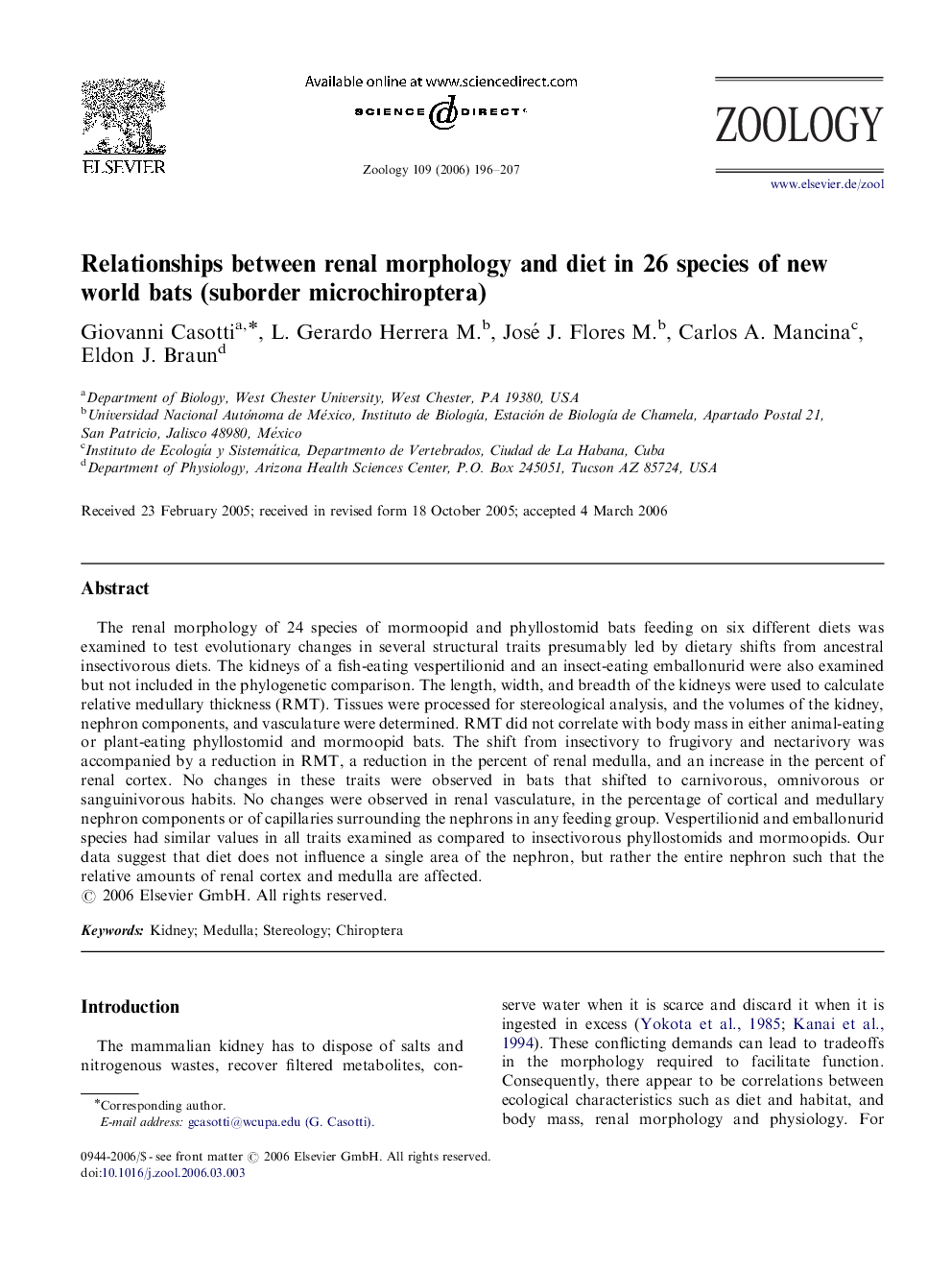| Article ID | Journal | Published Year | Pages | File Type |
|---|---|---|---|---|
| 2791375 | Zoology | 2006 | 12 Pages |
The renal morphology of 24 species of mormoopid and phyllostomid bats feeding on six different diets was examined to test evolutionary changes in several structural traits presumably led by dietary shifts from ancestral insectivorous diets. The kidneys of a fish-eating vespertilionid and an insect-eating emballonurid were also examined but not included in the phylogenetic comparison. The length, width, and breadth of the kidneys were used to calculate relative medullary thickness (RMT). Tissues were processed for stereological analysis, and the volumes of the kidney, nephron components, and vasculature were determined. RMT did not correlate with body mass in either animal-eating or plant-eating phyllostomid and mormoopid bats. The shift from insectivory to frugivory and nectarivory was accompanied by a reduction in RMT, a reduction in the percent of renal medulla, and an increase in the percent of renal cortex. No changes in these traits were observed in bats that shifted to carnivorous, omnivorous or sanguinivorous habits. No changes were observed in renal vasculature, in the percentage of cortical and medullary nephron components or of capillaries surrounding the nephrons in any feeding group. Vespertilionid and emballonurid species had similar values in all traits examined as compared to insectivorous phyllostomids and mormoopids. Our data suggest that diet does not influence a single area of the nephron, but rather the entire nephron such that the relative amounts of renal cortex and medulla are affected.
